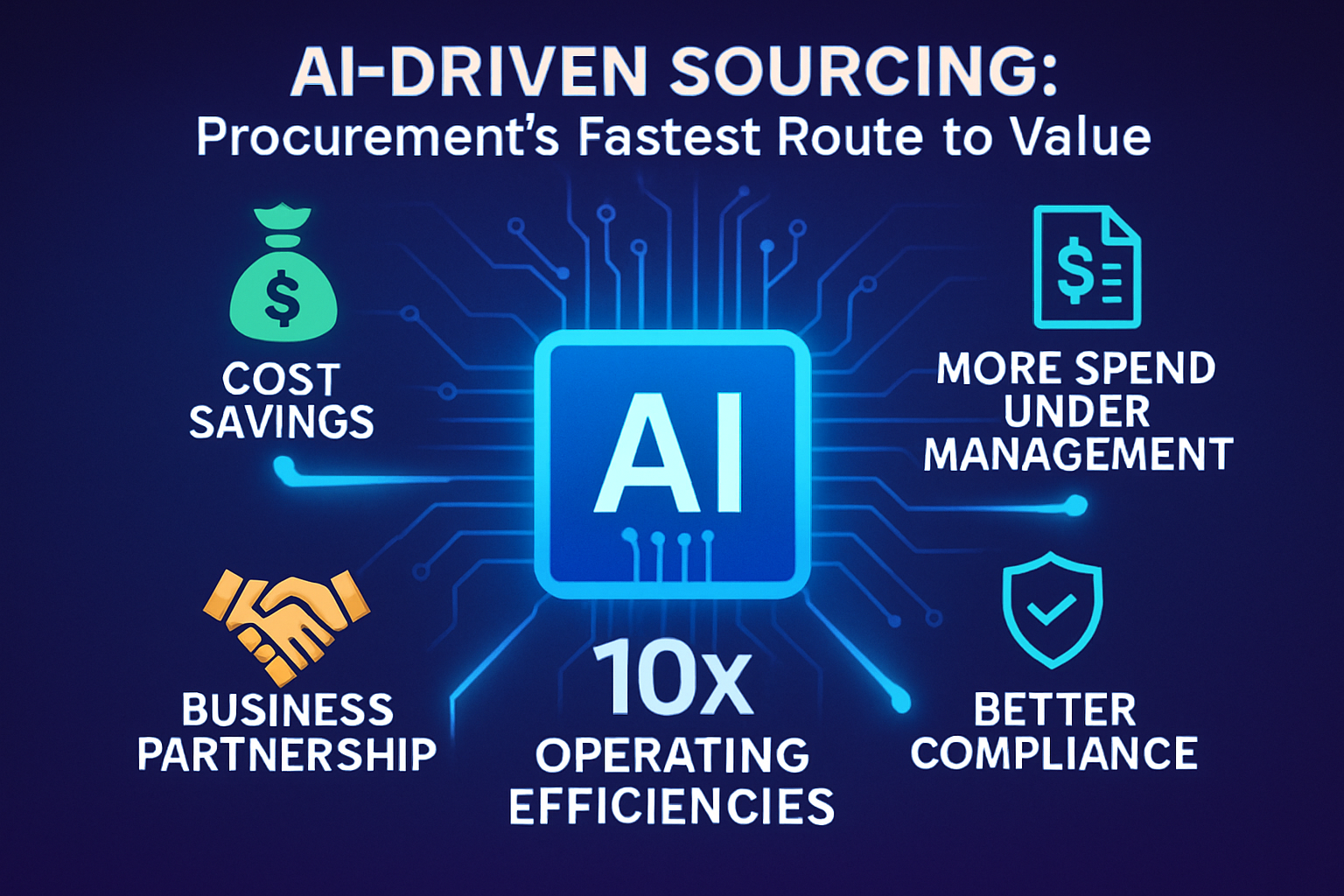Why AI Matters to the CPO: Simple Facts about Complexity for Procurement Leaders
.png?width=1000&name=Simple%20Facts%20about%20Complexity%20for%20Procurement%20Leaders%20(Part%202%20of%203).png)
This is part 2 of a three-part series about Why AI Matters to the CPO. To read part 1, What’s Real and What’s Not, click here.
As I wrote in my previous post, procurement teams are being asked to do more with less, all while addressing high levels of complexity across an expanded range of spend categories. For CPOs, this creates situations where they must apply every resource at their disposal to improve strategic sourcing—including technologies such as AI.
Automation is certainly not new to procurement, but, up to this point, most strategic sourcing technologies have moved legacy processes online rather than transformed them. Now that the “low-hanging fruit” spend categories have been managed, procurement is turning its focus to complex spend categories—including services. The strain from this mismatch is evident, as most strategic sourcing platforms struggle to support the advanced objectives associated with services spend.
In these cases, I often refer to the “complex intent” of business stakeholders. This is the encapsulation of what companies really need from service providers. When the services provided are knowledge based—such as IT, consulting, marketing, HR, or legal—it can be challenging to articulate the requirements or the “demand” for an RFP.
Procurement leaders have a double incentive to embrace and capitalize on this complexity: first because they have to deliver savings and value in parallel, and second because they want other enterprise functions to seek them out as internal partners. Decision makers should be drawn to procurement teams for the experience they offer, not forced into working with them for the sake of compliance.
With the help of AI-enabled strategic sourcing, procurement can address this complexity with speed and simplicity—without sacrificing results.
Speed
Historically, speed was achieved by completing sourcing tasks faster using standard methods, but that is no longer meaningful. Meaningful speed changes how tasks are completed or whether they even need to be completed by leveraging data and applying the analytical power of AI. When buyers are uncertain how to define their specifications and requirements, basic information inputs can be used to guide them toward a curated short list of suppliers that can meet their demand. With that information, adjustments can be made, and the short list can be quickly refined. This process can be delivered digitally in an instant, improving results and the user experience.
Simplicity
When documenting specifications and requirements is already a challenge, figuring out how to capture them even with the help of technology is an additional barrier. Once again, this is an area where AI can provide critical assistance. With intuitive data input supported by natural language processing, stakeholders can provide their needs conversationally. This makes it possible for stakeholders to walk through their requirements intuitively, leaving AI to do the work of turning them into supplier-ready specifications in 30 or 40 minutes rather than hours, days, or weeks.
Results
In traditional strategic sourcing, the limits of human capacity (not capability) confine results. Only so many suppliers can be manually evaluated in a reasonable time frame. When we rethink sourcing in the face of “complex intent,” we once again realize technology has a critical role to play. Using AI, companies can compare, evaluate, and award contracts based on individual supplier merit, unencumbered by the limitations of resource availability and time. The selection of the best suppliers for each specific demand will lead naturally to improved results because it fully engages the pool of preferred and new suppliers and eliminates the buyer’s unintentional bias toward “known” suppliers.
Information about enterprise service suppliers is just as accessible as information about any other product or material. The difference is that the range of providers is so wide—and the differences between their offerings so nuanced—that without the support of AI, procurement cannot deliver value in the time allotted. Procurement cannot take this next step without the enabling capabilities of AI.
In the final part of this series, I will share how AI-enabled strategic sourcing can help CPOs transform the expectations that the rest of the leadership team brings to their engagements with procurement.
***********************
Keith Hausmann is Chief Revenue Officer at Globality.



.png)